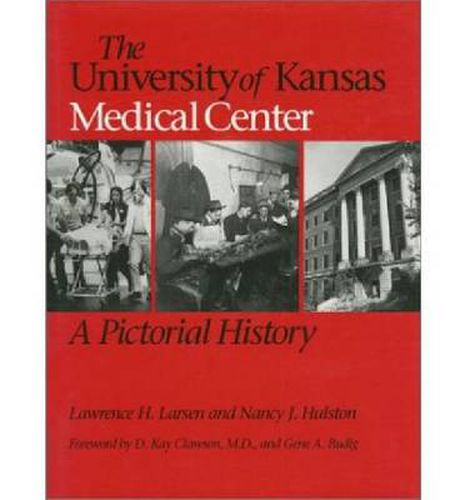Readings Newsletter
Become a Readings Member to make your shopping experience even easier.
Sign in or sign up for free!
You’re not far away from qualifying for FREE standard shipping within Australia
You’ve qualified for FREE standard shipping within Australia
The cart is loading…






In 1905, the University of Kansas School of Medicine opened in the basement of a building in downtown Kansas City, Kansas. By 1991 it occupied 2.3 million square feet of space in Kansas City and many thousands more in Wichita and area health education centers; it had an annual budget of over $235 million and a staff of over 5,000. A lot has happened in the last eighty-seven years.
In 385 black-and-white photographs, historians Lawrence Larsen and Nancy Hulston portray the tremendous changes that have taken place and illustrate a story of dramatic institutional growth from the humblest of beginnings.
From its opening in the fall of 1905, the University of Kansas School of Medicine grew in fits and starts. Progress depended on legislative and public support, which was often unreliable, especially at first. Larsen and Hulston chronicle the development of the school in a brief text, in quotations from contemporary sources, and in carefully chosen photographs. Photographic evidence was so complete, the authors note in their introduction, that had we wanted to, we could have devoted an entire chapter to the development of the Medical Center power plant.
Instead, they focused on the changes in the physical facilities at 39th and Rainbow and the accompanying evolution of medical education there. Action shots show buildings under construction, as well as doctors and students in settings that range from primitive, turn-of-the-century laboratories to the gleaming present-day facilities. Many photographs portray doctors, nurses, and students going about their daily activities-conducting clinical examinations, performing nursing demonstrations, rehabilitating children, and caring for patients. Others depict social life, fraternal activities, and fun. One fascinating set of photographs documents the changes in operating rooms through the years.
Larsen and Hulston also place the development of the school in its larger social context, exploring programs like the Murphy Plan, designed to bring medical care to outlying areas of Kansas, and the effect of the two world wars on the school.
This is a good bit more than a ‘coffee table’ book! It should do well in its institutional role, but should also attract attention from historians of medicine and education more generally.–Charles E. Rosenberg, coauthor (with Janet Golden) of Pictures of Health: A Photographic History of Health Care in Philadelphia and president of the American Association for the History of Medicine.
$9.00 standard shipping within Australia
FREE standard shipping within Australia for orders over $100.00
Express & International shipping calculated at checkout
In 1905, the University of Kansas School of Medicine opened in the basement of a building in downtown Kansas City, Kansas. By 1991 it occupied 2.3 million square feet of space in Kansas City and many thousands more in Wichita and area health education centers; it had an annual budget of over $235 million and a staff of over 5,000. A lot has happened in the last eighty-seven years.
In 385 black-and-white photographs, historians Lawrence Larsen and Nancy Hulston portray the tremendous changes that have taken place and illustrate a story of dramatic institutional growth from the humblest of beginnings.
From its opening in the fall of 1905, the University of Kansas School of Medicine grew in fits and starts. Progress depended on legislative and public support, which was often unreliable, especially at first. Larsen and Hulston chronicle the development of the school in a brief text, in quotations from contemporary sources, and in carefully chosen photographs. Photographic evidence was so complete, the authors note in their introduction, that had we wanted to, we could have devoted an entire chapter to the development of the Medical Center power plant.
Instead, they focused on the changes in the physical facilities at 39th and Rainbow and the accompanying evolution of medical education there. Action shots show buildings under construction, as well as doctors and students in settings that range from primitive, turn-of-the-century laboratories to the gleaming present-day facilities. Many photographs portray doctors, nurses, and students going about their daily activities-conducting clinical examinations, performing nursing demonstrations, rehabilitating children, and caring for patients. Others depict social life, fraternal activities, and fun. One fascinating set of photographs documents the changes in operating rooms through the years.
Larsen and Hulston also place the development of the school in its larger social context, exploring programs like the Murphy Plan, designed to bring medical care to outlying areas of Kansas, and the effect of the two world wars on the school.
This is a good bit more than a ‘coffee table’ book! It should do well in its institutional role, but should also attract attention from historians of medicine and education more generally.–Charles E. Rosenberg, coauthor (with Janet Golden) of Pictures of Health: A Photographic History of Health Care in Philadelphia and president of the American Association for the History of Medicine.